 Image search results - "go" Image search results - "go" |
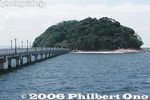
Takeshima island is connected by a bridge. The island is uninhabited, but has a Yaotomi Jinja Shinto shrine (八百富神社) dedicated to goddess Takeshima Benten. Designated as a Natural Monument for its flora which greatly differs from that on shore.
|
|

Torokko train at Arashiyama for Hozu Gorge
|
|

Road to Himeji Castle. From Himeji Station, the main road leads to the castle which can be seen in the distance.
|
|

Akashi StationOn the JR Sanyo Line.
|
|

Akashi Castle seen from the train platform of Akashi Station.
|
|

Bird's eye view of Shirakawa-go from Ogimachi Castle ruins.
|
|

Side view of Wada-ke House
|
|

Ryogoku Kokugikan sumo arena as seen from Ryogoku Station
|
|

The Kokugikan as seen from JR Ryogoku Station platform.
|
|

JR Kawagoe Station 川越駅
|
|

Kawagoe Matsuri is a parade of ornate floats during the day and evening in the city's old town of traditional buildings. Around 15 floats appear during the festival. Held on the third weekend in Oct. Main road where the festival will climax in the evening.
|
|

Entrance to Honmaru Goten palace, Kawagoe Castle.
|
|

Gate to Kitain, a Tendai Buddhist temple. Part of Kawagoe's National Important Traditional Townscape Preservation District (重要伝統的建造物群保存地区).
|
|
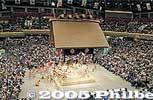
More people than the real tournamentAbout 8,000 people took time out from their Golden Week holidays to see this official sumo practice of all sumo stables.
|
|

Shirakawa-go is also a National Important Traditional Townscape Preservation District (重要伝統的建造物群保存地区).
|
|
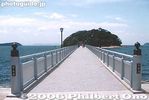
400-meter long bridge to Takeshima island near JR Gamagori Station. The island is made of granite. Circumference is 680 meters. There's a walking path around the island.
|
|
|
|

Road to Himeji Castle. Otemae Boulevard (Symbol Road). 大手前通り
|
|

Akashi Castle seen from the train platform of Akashi Station.
|
|

Crowd outside the Kokugikan await their favorite wrestlers.
|
|

Path to Wada House entrance
|
|

JR Kawagoe Station plaza
|
|

One of the picturesque streets of the city.
|
|
|

Kitain Main hall, Kawagoe
|
|
|
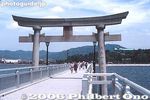
Torii on Takeshima island
|
|
|

Uchibori Inner Moat
|
|

Close-up of Ogimachi
|
|

Main house on left and latrine on right with large vats to gather fertilizer.
|
|

Crowd enters the Kokugikan for Musashimaru's retirement ceremony on Oct. 2, 2004.
|
|

Hon-Kawagoe Station 本川越駅
|
|

Children lead the way for a float at Kawagoe Festival.
|
|

Garden
|
|

Main hall
|
|

Yokozuna Deliberation Council membersIn the middle is Kitanoumi.
|
|
|
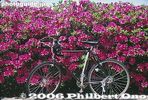
My bicycle somewhere in Gamagori.
|
|
|

Castle moat
|
|

Castle moat
|
|

Main house with a recently rethatched roof, making it look very smooth.
|
|

Passing out programs
|
|

Toki no Kane, Time Bell Tower, symbol of Kawagoe. Part of Kawagoe's National Important Traditional Townscape Preservation District (重要伝統的建造物群保存地区). 時の鐘
|
|
|
|

Pagoda at Kitain temple, Kawagoe
|
|
|
|

JR Gamagori Station. In the foreground is my bicycle.
|
|

Hozu River
|
|

Path to Otemon Gate, the main gate to the castle. 大手門
|
|

Entrance to Akashi Park
|
|

Shirakawa-go 白川郷
|
|

Wada House, Shirakawa-go
|
|

Musashimaru at the entrance
|
|

There is a bell at the top which is rung 4 times a day. The bell or gong looks like a temple bell.
|
|
|
|
|

Sumo elders in the front row
|
|

Hozu Gorge
|
|

Otemon Gate, Main gate to castle. Reconstructed in 1937. 大手門
|
|

Castle moat
|
|
|
|
|

Musashimaru greets the crowd
|
|

The bell is rung at 6 am, 12 noon, 3 pm, and 6 pm.
|
|

Tekomai geisha lead the way for a float at Kawagoe Festival.
|
|
|
|

Former yokozuna Taiho, Takanosato, Kotozakura, and Wakanohana watch intently.
|
|
|
|

World Heritage Site marker. 世界遺産 姫路城
|
|

Twin turrets of Akashi Castle
|
|

Way to Kokugikan. The guarded side gate on the right is for sumo wrestlers.
|
|
|
|

Gable openings let light and air come through the attic to foster silkworms.
|
|

Hawaii's last sumo wrestler shakes hands.If he were married, his wife would be beside him.
|
|

Kura-zukuri style architecture. Local merchants built these earthen buildings after the Great Fire of Kawagoe in 1893. 蔵造りの町並み
|
|

Tekomai
|
|

Veranda facing a garden.
|
|

Over 500 stone statues of Rakan Buddhist disciples
|
|

Asashoryu greets the council upon entry
|
|

Train station platform
|
|

World Heritage Site marker. 世界遺産 姫路城
|
|

Twin turrets of Akashi CastleThe left turret is called the Hitsujisaru Turret (坤櫓) and the right one is called the Tatsumi Turret (巽櫓).
|
|

Taiko drum tower
|
|

A small stream beside the house helps to melt the snow falling off the roof.
|
|
|

Musashimaru right after I shook his hand.
|
|

Kurazukuri earthen buildings were fire-resistant, so they built these fire-resistant shops after the Great Fire. "Kura" means warehouse.
|
|
|
|
|

Carved during the 18th and 19th centuries.
|
|

Asashoryu sips water offered by Ozeki ChiyotaikaiAs soon as Asashoryu entered the arena, many wrestlers went up to him to offer water as a show of respect.
|
|
|
|

Shooting the rapids
|
|

San no Maru. This area is ringed by cherry trees. 三の丸広場
|
|

Hitsujisaru Turret (坤櫓)
|
|

Taiko drum tower
|
|
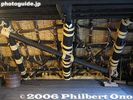
Underside of roof made of an A-frame truss structure
|
|

The thatched roof is replaced every 30 years. Every spring, 6 or 7 thatched roofs are replaced in Shirakawa-go.
|
|

Signboard for retirement ceremony at entrance.It reads "Musashimaru, Intai Danpatsu Hiroo Ozumo" which means "Musashimaru Topknot-Cutting and Retirement Sumo Exhibition."
|
|
|
|

Hill where the Fujimi Turret once stood.
|
|

五百羅漢
|
|
|

Asashoryu and TochiazumaAfter offering water, Tochiazuma shares a laugh with the yokozuna.
|
|

Kawagoe Festival
|
|
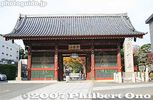
Belonging to the Buzan School of the Shingon Sect of Buddhism, Gokokuji Temple was built by the mother of Shogun Tokugawa Tsunayoshi in 1682. The Gekkoden Hall was moved here from Miidera temple in Otsu, Shiga Pref. The Tahoto Pagoda was modeled after the Tahoto at Ishiyamadera in Otsu, Shiga. Okuma Shigenobu, founder of Waseda Univ., is also buried here. This is the entrance to Gokokuji Temple, Niomon Gate. It's right next to Gokokuji Station on the Yurakucho subway line. 仁王門
|
|

Ogre on the train
|
|

From the Ohmi Railways' Gokasho Station, you can walk to the Fujii Hikoshiro House (藤井 彦四郎邸), which is also a history museum, and to the modern Ohmi Merchant Museum (近江商人博物館).Ohmi Railways Gokasho Station 近江鉄道五箇所駅
|
|

Gokasho is famous for the grand, old homes of wealthy Omi merchants. Three of them are clustered together for us to visit inside. They are the former residences of Tonomura Uhee (外村 宇兵衛), Tonomura Shigeru (外村 繁), and Nakae Jungoro (中江
|
|

Special Historical Place marker
|
|

Path to turrets
|
|

People coming to Takahata Fudoson temple on Feb. 3, Setsubun day.
|
|

Sumo wrestler banners
|
|

Belonging to the Shingon Sect's Buzan school, this is one of Tokyo's major temples. The real name is Sojiji (總持寺), but everyone calls it Nishi-Arai Daishi.The temple grounds feature many flowering trees and plants including an unusual species of cherry blossoms which bloom in winter. Daishi-mae Station. Much larger station than I expected. Probably for the New Year's crowds. 大師前駅
|
|
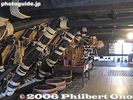
The bottom ends of these beams are pegged into a point (komajiri) resting on another cross beam. Wada House, Shirakawa-go
|
|

Gate to Takayama Jinya
|
|

Former Hatano residence and birth home of Yoshida Togo 旧旗野邸 (吉田東伍生家)
|
|

It costs several million yen and a small army of workers to replace the thatch. The cost is subsidized by the town, prefecture, and national government.
|
|

Musashigawa stablemaster (former Yokozuna Mienoumi) in the entrance hallInside the entrance hallway, there was a long table on the left side with ribbons which served as name tags for distinguished guests. Musashigawa is the name of Musashimaru's sumo stable.
|
|

JR Ryogoku Station platform for the Sobu Line.
|
|

Kawagoe Festival Museum (Kawagoe Matsuri Kaikan) 川越まつり会館
|
|

Former castle moat.
|
|
|
|
|

Where silkworms were raised to make silk cocoons.
|
|
|

Kawagoe Festival Museum
|
|

After you pass through the Niomon Gate, this is what you see.
|
|

Ogre posing
|
|

You can buy a set of tickets to all four Omi merchant homes and the museum which cheaper than buying a ticket at each place. Ohmi Railways Gokasho Station 近江鉄道五箇所駅
|
|

Gokasho was home to many Omi merchants who plied up and down Japan during the Edo Period to sell and trade their wares. They became quite successful selling medicines, lacquerware, sake, etc.Wall of former home of Omi merchant Tonomura Shigeru (1902-1961) (外村 繁邸).
|
|

San no Maru cherry trees. The stone marker says that Himeji Castle is one of Japan's 100 Best Cherry Blossom Sites.
|
|

Takahata Fudoson temple entrance 高幡不動尊
|
|

Steps to turrets
|
|

Daishi-mae Station 大師前駅. Nishi-Arai Daishi Temple was said have been founded by Priest Kobo Daishi in 826. One of the Kanto Region's Big Three Daishi Temples.
|
|

Sumo wrestler and sumo stable banners
|
|

Entrance to Takayama Jinya. A Jinya was a regional government office during the Edo Period. The Tokugawa government dispatched magistrates to administer the region. About 60 jinya existed and only this one survives.
|
|
|
|

Rear view of birth home of Yoshida Togo who was a famous geographer of Japan who compiled an encylopedia of Japanese place names. His son was Yoshida Chiaki who composed the melody of the song "Biwako Shuko no Uta" (Lake Biwa Rowing Song).
|
|

Entrance hall is clogged up by a side show of hula.
|
|

Psst, wanna know a secret? Kitain Temple, Kawagoe
|
|

Friends after allKyokushuzan chats with fellow Mongolian Asashoryu.
|
|
|
|

Well
|
|

Most take the train from Arashiyama, then ride the boat back.
|
|

Ohmi Railways Gokasho Station, waiting room.
|
|

Former home of Omi merchant Tonomura Shigeru (外村 繁邸). MapTonomura Shigeru (外村 繁), Tonomura Uhee (外村 宇兵衛), and Nakae Jungoro (中江 準五郎)
|
|

Castle view from San no Maru.
|
|

Entrance to Takahata Fudoson Kongoji temple
|
|

The setsubun bean-throwing starts with a memorial service, then a procession of the bean throwers and priests.
|
|

Tatsumi Turret (巽櫓)
|
|

Kokugikan
|
|

The main path to the temple is lined with the usual shops, but it is not aligned with the train station. The path from the train station takes a different route.
|
|

JR Ryogoku Station 両国駅
|
|

Slats on the attic floor to enable smoke and soot from the hearth to reach the attic.
|
|

For 176 years or 25 generations, the building housed government administrators, accountants (rice tax collectors), and the police.
|
|
|

A room in the birth home of Yoshida Togo
|
|

Musashigawa Stable wrestlers greet visitorsIncludes Miyabiyama and Musoyama.
|
|
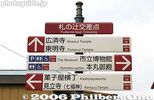
Street signs in English
|
|

Oh man, I forgot my glasses!
|
|

Practice
|
|
|
|

Well
|
|

End of the gorge
|
|

Ohmi Railways Gokasho Station building as seen from the train platform.
|
|
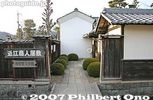
Entrance to former home of Omi merchant Tonomura Shigeru (外村 繁邸). Gokasho is also a National Important Traditional Townscape Preservation District (重要伝統的建造物群保存地区).
|
|

Main castle tower (donjon), called Tenshu. 大天守
|
|

Takahata Fudoson Kongoji temple, Hino, Tokyo 高幡不動尊金剛寺
|
|

Tatsumi Turret (巽櫓) (not open to visitors)
|
|

Priests in setsubun procession within the temple grounds.
|
|

Kokugikan ticket office (right). Ticket prices range from 2,100 yen to 14,300 yen.
|
|

JR Ryogoku Station. This part of the station building is now a beer hall. The train station entrance has moved to the right of this.
|
|

Main path to temple
|
|

Straw rope tie the large beams to form a truss for the roof.
|
|
|

Garden of the birth home of Yoshida Togo
|
|

In the entrance hall, hula and Hawaiian music direct from Hawaii
|
|

Shopping street
|
|

Turning the corner
|
|

Boo-hoo! My cat ran away!
|
|
|
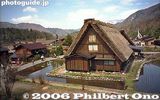
Shirakawa-go 白川郷
|
|
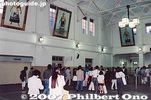
Old entrance to Ryogoku Station with a high ceiling and giant portraits of sumo wrestlers.
|
|

Map of temple grounds. Belonging to the Buzan School of the Shingon Sect of Buddhism, Gokokuji temple was built by the mother of Shogun Tokugawa Tsunayoshi in 1682.
|
|

Kameoka Station
|
|

Ohmi Railways Gokasho Station train platform.
|
|

Entrance to former home of Omi merchant Tonomura Shigeru.
|
|

Himeji Castle tower, a National Treasure. 大天守
|
|

Niomon Gate, Important Cultural Property from the Muromachi Period 仁王門 (重要文化財)
|
|

Tatsumi Turret (巽櫓)
|
|

Priests in setsubun procession within the temple grounds.
|
|

Kokugikan ticket office. Cheap tickets costing 2,100 yen are sold every day of the tournament, but sell out fast by noon or so.
|
|

Sanmon Gate, the main gate. 山門
|
|
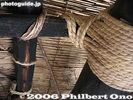
Another rope made of a crushed tree branch to tie smaller beams. It tightens as it dries.
|
|

Magistrate's (governor) office 御役所
|
|

Entrance to the Yoshida Togo Memorial Museum which exhibits various documents and personal effects of Yoshida Togo. Museum admission 300 yen. Closed Mon.
|
|

The retirement ceremony had a lot of Hawaiian touches. This was only the beginning.Hula dancers and live Hawaiian band from Hawaii.
|
|

Closeup of carvings on a float.
|
|

City Museum 市立博物館
|
|
|

Me next please!!!The winner gets to decide who to wrestle next. The rikishi all beg to be picked.
|
|
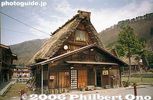
Photo gallery
|
|

View of Administrator's office from the veranda
|
|

Bell tower at night
|
|

Steps going up to an inner gate called Furomon 不老門
|
|

In front of Gokasho Station is a map and stone monument. Gokasho is also a National Important Traditional Townscape Preservation District (重要伝統的建造物群保存地区).
|
|

Living room of former home of Omi merchant Tonomura Shigeru.
|
|

Castle tower closeup. 大天守
|
|

Niomon Gate
|
|

Priests in setsubun procession coming through Niomon Gate
|
|

Tatsumi Turret (巽櫓)
|
|

Sanmon Gate
|
|

Present entrance to Ryogoku Station (during spring festival).
|
|

Gate to enter Kokugikan.
|
|
|

Inside Yoshida Togo Memorial Museum. The 2nd floor also has a display panel about his son Yoshida Chiaki who composed the song "Hitsuji-gusa" whose melody was used in the song "Biwako Shuko no Uta" (Lake Biwa Rowing Song).
|
|

Konishiki also sings. (His company arranged the entertainment.)
|
|
|
|
|

The Bulgarian (Kotooshu) on the left
|
|
|

Residence
|
|

Furomon Gate (Ageless Gate) 不老門
|
|

Stone monument for the local Obata shonin merchants.
|
|
|

Castle tower, a National Treasure. 大天守
|
|

Fudo Hall on left and Horinkaku on the right, Takahata Fudoson Kongoji temple, Hino, Tokyo
|
|

Priest blowing a conch shell
|
|

View from castleThe train station can be seen in the distance.
|
|

At the gate, you might see a famous former wrestler (like former Takamiyama from Hawaii, now Stablemaster Azumazeki) taking your ticket.
|
|

Food stalls lead you to the main worship hall.
|
|

Ryogoku Station exit. Only one sumo portait hangs here.
|
|
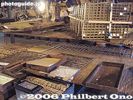
Implements to raise silkworms.
|
|

Restaurant
|
|

Musashigawa Stable wrestler wearing Aloha-print yukataFlowery pattern (plumeria) with "Musashimaru" imprinted.
|
|

Moving a float to the starting point.
|
|
|
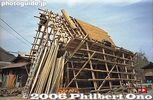
Rethatching a small storehouse.
|
|

View from Furomon Gate
|
|

Road in front of the train station.
|
|
|
|
|

Priests in setsubun procession coming through Niomon Gate
|
|

Castle wall and Hitsujisaru Turret (坤櫓)
|
|

Incense burner 大香炉
|
|
| 6550 files on 26 page(s) |
1 |
 |
 |
 |
 |
|